
Dog Toy Safety Certifications: What's Legit?
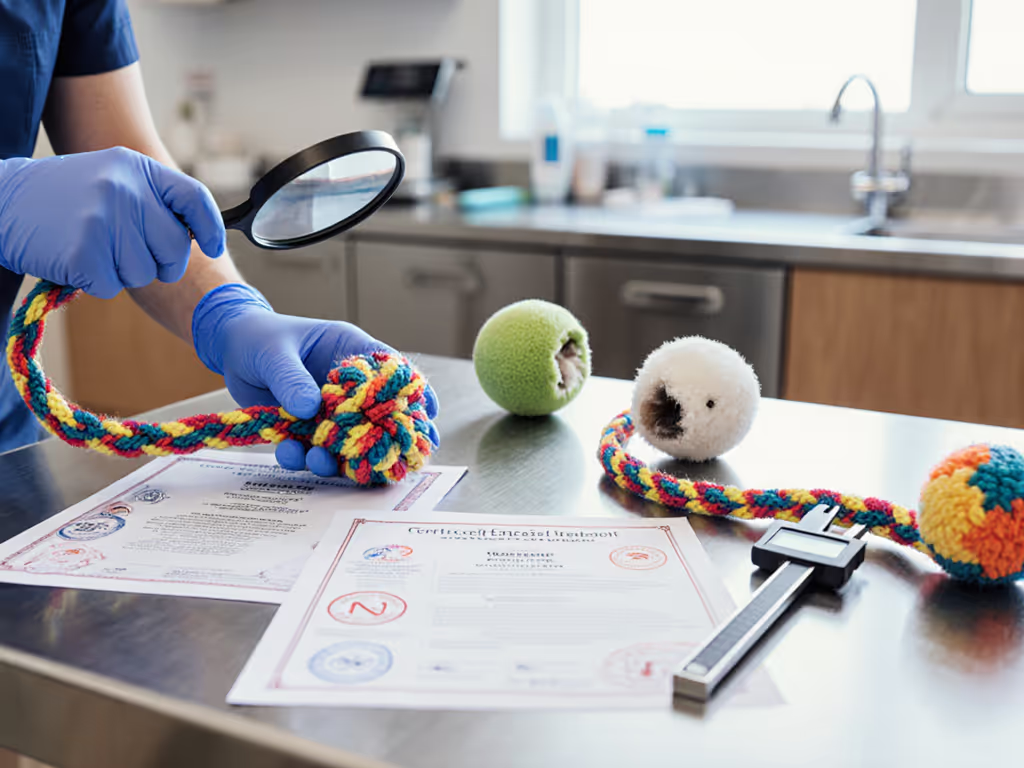
When shopping for dog toy safety certifications, you're likely navigating a minefield of marketing claims like 'non-toxic' or 'crash tested,' without clear proof. Unlike children's toys governed by rigorous legitimate toy safety standards like ASTM F963, pet products operate in a regulatory void. The hard truth? There are currently no federal requirements for dog toy safety testing in the U.S. This gap leaves guardians guessing whether that 'indestructible' chew will splinter into choking hazards or leach toxins while your dog gnaws during your Zoom call. If you need safer durability options, start with our best chew toys for hard chewers tested for real-world toughness. As someone who designs enrichment for real homes (where thin walls and WFH demands mean safety must align with your rhythm), I'll cut through the noise to show what certifications actually matter.
Why 'Crash Tested' or 'Non-Toxic' Claims Are Meaningless
Marketing terms like 'crash tested' or 'CPSIA compliant' are frequently slapped on pet products with zero verification. Here's why they're often smoke and mirrors:
-
The 'Crash Tested' Trap: Just because a harness or crate was tested doesn't mean it passed. As noted by the Center for Pet Safety (CPS), most manufacturers only test one size, not accounting for variations in dog weight or crash dynamics. Worse, they rarely publish test data. One retailer's claim of 'MGA Research Certified' misrepresents reality: MGA tests but doesn't certify products (CPS contracts them specifically for independent validation).
-
CPSIA Compliance Isn't for Pets: The Consumer Product Safety Improvement Act (CPSIA) mandates strict lead, phthalate, and toxicity testing for children's toys. But CPSIA compliance for pet products is a contradiction, since federal law excludes pet items from these requirements. A 'non-toxic' chew toy label? Meaningless without third-party verification.
-
The ASTM F963 Dog Toys Mirage: While children's toys follow ASTM F963 for mechanical/chemical safety, this standard doesn't apply to dogs. Retailers listing 'ASTM F963' for pet products are borrowing credibility from human-toy regulations, a sleight of hand, not proof.
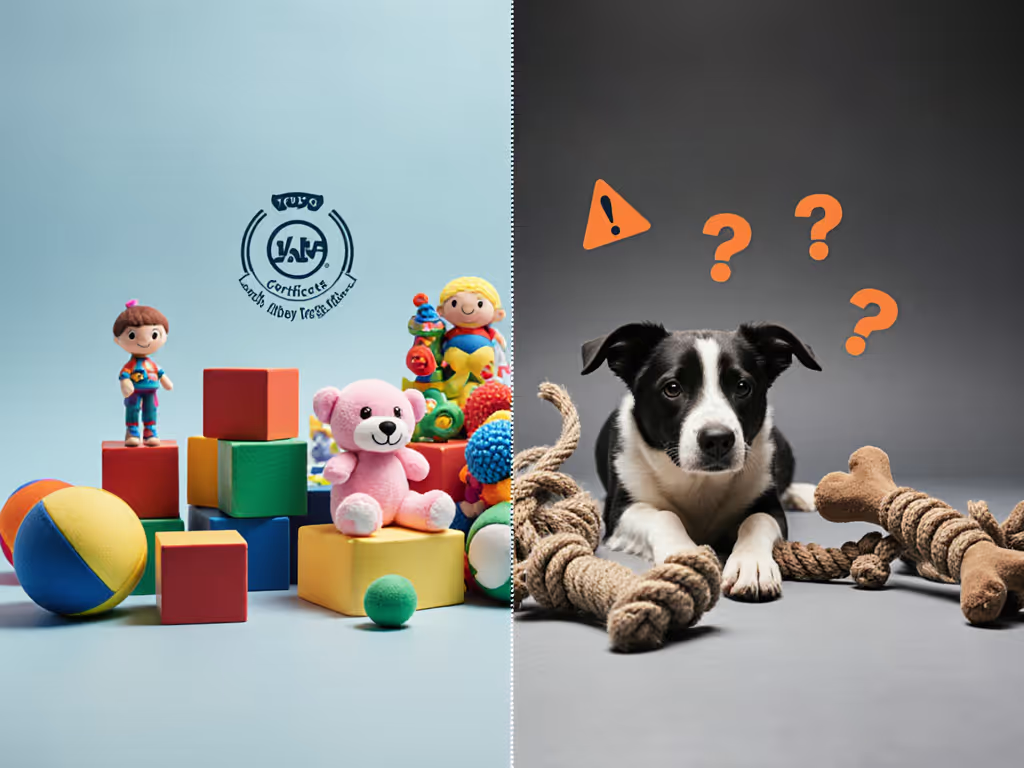
Quiet brains beat loud rooms: design enrichment around life.
This isn't theoretical. Consider that 69 million U.S. households own dogs, yet pet products lack the oversight governing children's items. Unlike kids' toys (which require label warnings, tracking codes, and third-party lab testing), your dog's chew toy could contain heavy metals or break into dangerous shards with no accountability. The stakes? Vet bills from intestinal blockages or chemical exposure incidents that disrupt your home's peace. For apartment dwellers, a noisy, messy toy failing at 2 a.m. isn't just unsafe, it is a household crisis.
The Rare Exceptions: What Actually Counts as Legit
Amid the chaos, two frameworks offer real verification. While still nascent, they're your best tools for filtering hype:
1. CPS Certification (The Gold Standard)
The Center for Pet Safety's CPS Certified program is the only independent, publishable standard for pet products. Unlike vague 'tested' claims:
- Products undergo rigorous, size-varied testing (e.g., crash tests for multiple harness sizes)
- Results are publicly accessible in CPS reports
- Focuses on real-world failure modes: Does a crate shield against impact? Does a harness prevent ejection?
Currently rare, but brands pursuing this (like those making vehicle restraints) are prioritizing transparency over marketing. Always ask: 'Can you share the CPS report?' If not, it's not certified.
2. ASTM F15.05: The Coming Wave
ASTM International's new subcommittee F15.05 is developing the first global standards for dog toys and safety harnesses. Their mission:
- Create test methods for dog toy testing protocols (e.g., force required to detach squeakers, chemical leaching limits)
- Define pass/fail criteria for hazards like splintering or toxic materials
- Address gaps in sizing consistency and jaw-strength benchmarks
This will not be law, but when finalized (expected late 2025), retailers and manufacturers adopting it will signal serious safety commitment. Track progress via ASTM's public work items.
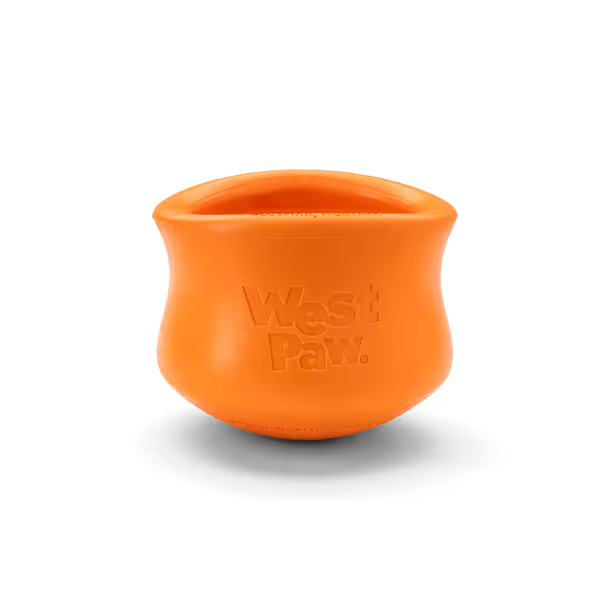
West Paw Zogoflex Toppl Treat Toy
For example, the West Paw Zogoflex Toppl treats dispensing puzzle (used in shelter enrichment programs) highlights how forward-thinking brands self-regulate beyond industry norms. To compare similar feeders by safety and difficulty, see our treat-dispensing toys comparison. While not CPS-certified (as dog toys lack a standard), it's FDA-compliant, dishwasher-safe, and made with recyclable materials. Crucially, they publish third-party non-toxic toy verification reports for heavy metals. This transparency lets you assess their safety process when official standards are absent. Look for brands sharing:
- Lab reports on phthalates/BPA (not just 'BPA-free' claims)
- Force-test data for chew resistance
- Noise profile measurements (e.g., decibel levels during play) If sustainability is a priority, check our eco-friendly dog toys that actually last.
Your Action Plan: Safety That Fits Your Home
Forget chasing 'indestructible' hype. Prioritize verifiable safety within your home's constraints. Here's how:
1. Decode Claims Like a Pro
- ✅ Demand proof: 'Non-toxic' isn't enough. Ask for lab reports (e.g., 'SGS heavy metals test').
- ❌ Ignore 'ASTM F963' for dog toys: It's irrelevant, this standard covers human children's items.
2. Match Toys to Your Non-Negotiables
Audit your home's needs first:
| Factor | Low-Risk Signal | Red Flag |
|---|---|---|
| Noise Profile | <60 dB (quieter than a dishwasher) | Loud squeakers requiring constant supervision |
| Mess Index | Smooth textures, dishwasher-safe | Stuffing/loose fillers creating crumb trails |
| Supervision Load | Self-contained play (e.g., puzzle toys) | Toys requiring hovering to prevent destruction |
3. Vet Brands Systematically
- Check wash cycles: Toys surviving 10+ dishwasher runs signal durability. For safe cleaning schedules and methods by material, use our toy cleaning guide.
- Ask about failure modes: 'What breaks first? When should I retire this?'
- Prioritize quiet-first picks (especially for WFH or thin-walled apartments). Safety isn't just physical.
Final Note: Safety Scales With Your Peace of Mind
True safety isn't just about avoiding vet trips, it's ensuring enrichment sustains your household harmony. A 'safe' toy that shatters your neighbor's sleep with 90-decibel squeaks or litters your floors with PVC shards isn't safe for your home. As the global pet toy market nears $3 billion with zero federal oversight, your vigilance is the only standard that matters. Start with CPS reports for restraints, demand transparency on materials, and always prioritize quiet-first picks that align with your rhythms. When a toy clears your noise profile, mess index, and supervision load, that's when safety becomes sustainable.
Quiet brains beat loud rooms: design enrichment around life.
Your Next Step: Audit one toy in your rotation today using the Noise Profile/Mess Index checklist above. Note where it falls short, and replace it with a verified option that supports both your dog's needs and your home's sanity.
Related Articles

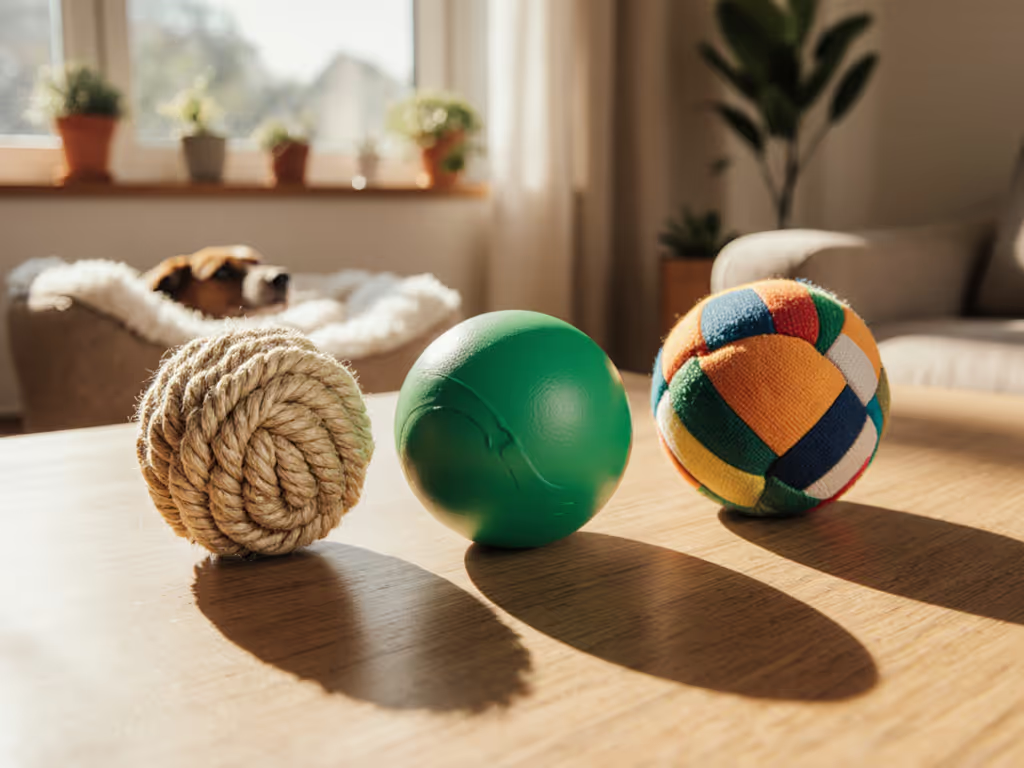
Sustainable Dog Toy Materials Face-Off: Hemp, Algae, Recycled
Compare hemp, algae, and recycled textiles using lab-backed metrics - chew resistance, engagement half-life, safety testing, and carbon impact - to choose truly sustainable dog toys. Match each material to your dog’s jaw strength and playstyle for safer, longer-lasting enrichment.
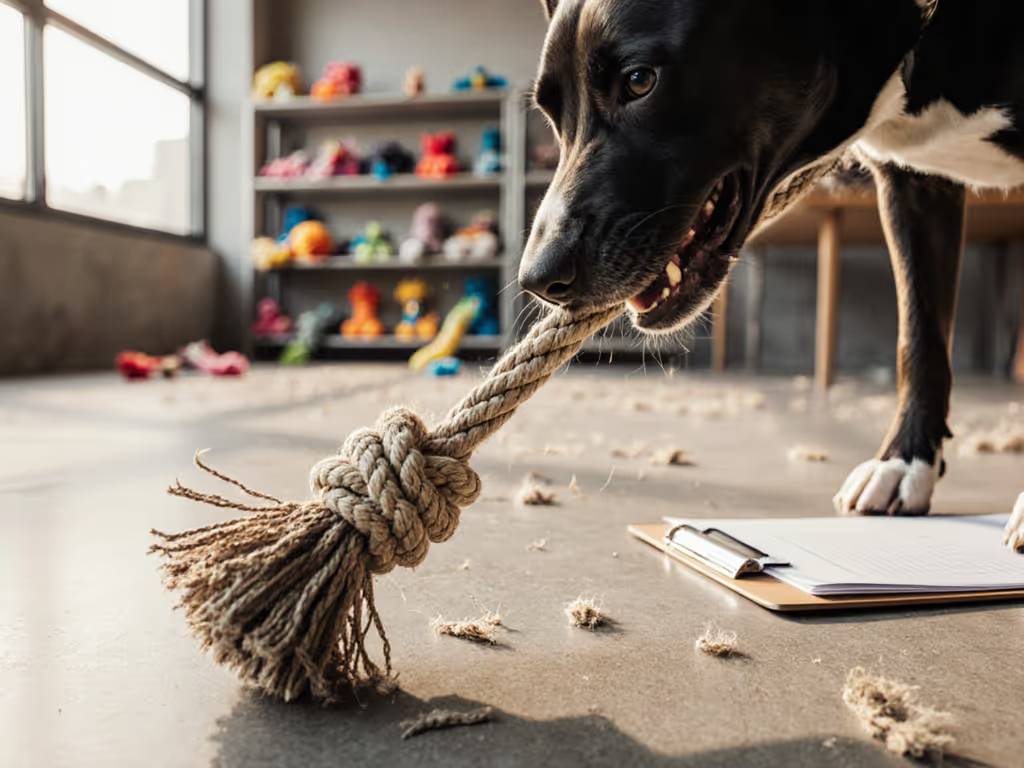
Best Indestructible Dog Toys: Survival Tested for Hard Chewers
Learn how shelter stress-testing of 217 toys separates marketing claims from real durability for hard chewers, with clear guidance on materials, safety margins, and arousal bands. Discover the few models that consistently survive high-arousal use and how to match them to your dog's playstyle for safer, longer-lasting enrichment.
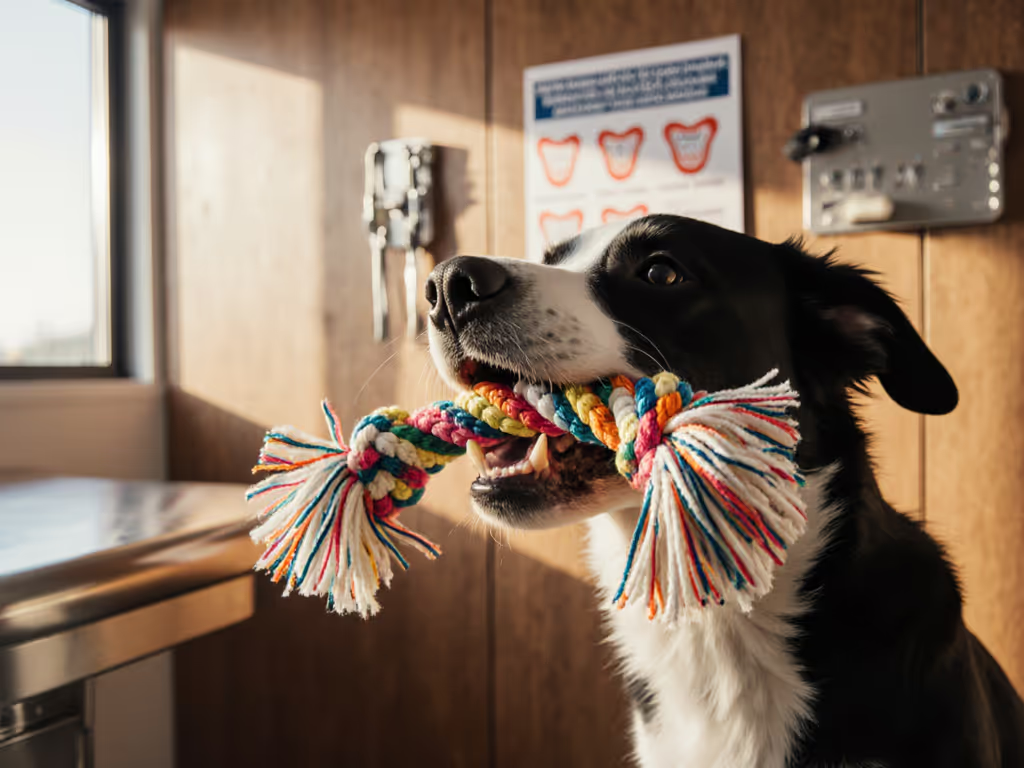
Best Dental Rope Toys: Shelter-Tested Durability & Safety
Use shelter-tested criteria to pick dental rope toys that truly clean teeth and withstand high-intensity play. Match size to jaw strength, prioritize safe fiber orientation and knot geometry, and run quick safety checks to reduce failures and choking risks.
